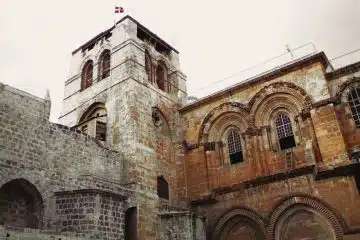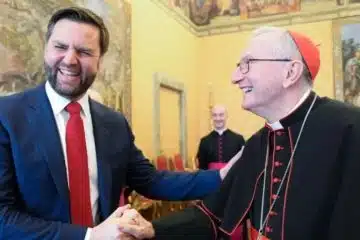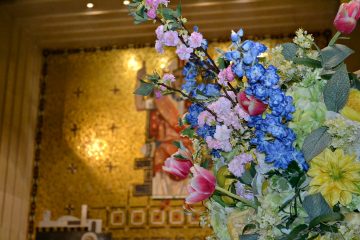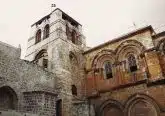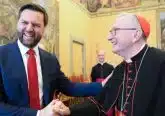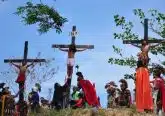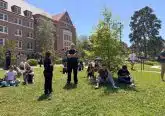Learning curve: Public schools chart new ground with religious holidays
By Carol Zimmermann
WASHINGTON (CNS) — A growing number of U.S. public school districts are combining lessons in world religions with U.S. government and politics as they grapple with closing schools for religious holidays.
“The question is not should we do it. We have to do it to live with one another. How do we do it is the question,” said Charles Haynes, director of the Religious Freedom Center of the Newseum Institute in Washington.
And that’s the million-dollar question not only for Haynes, who has written extensively about religion in public schools, but for many school districts across the country with diverse populations and religious groups seeking fair recognition.
Although the First Amendment’s establishment clause bars officials from closing public schools on religious holidays to accommodate religion, it allows them to close if it will serve a legitimate secular or educational purpose. A percentage of student absences to observe a religious holiday is viewed as a legitimate factor, he said.
For decades, public school districts in New York and Maryland have been closed for major Jewish holy days for this reason. Public schools, first started by Protestants, Haynes points out, have always been closed for Christmas and are often closed near Easter. In Maryland, state law requires public schools to be closed on Christmas, Good Friday and Easter Monday.
Maryland’s Montgomery County school officials found what they thought was a compromise to school closure on Jewish holy days by simply labeling the days off as professional days, but that did not sit well with many in the community.
The county school board also recently moved one of its professional days to give students a day off next fall for Muslim festival of Eid al-Adha.
Last year, New York City public schools announced they would close for the observance of two Muslim holy days, becoming the first city to do so.
Muslim holy days have long been school holidays in areas such as Dearborn, Michigan, and at least five other school districts in the country, including Cambridge, Massachusetts; Burlington, Vermont; and two New Jersey districts.
But as the number of members of different religious groups expands across the United States, the inevitable question is raised: If Christians and Jewish holy days can be school holidays, why not recognize Muslim, or for that matter Hindu or Sikh, holy days?
That’s exactly what another Maryland county recently debated. In mid-January, school board members in Howard County voted unanimously to give public school students days off on the Muslim holiday of Eid al-Adha, the eve of Lunar New Year and the Hindu holiday of Diwali, in addition to two Jewish holy days. The county schools will continue to be closed on Jewish holy days of Yom Kippur and Rosh Hashanah.
“We’re in a different America,” Haynes told Catholic News Service Jan. 20, noting the shift from a predominantly Christian country to one with many religions, or no religion, who are finding their voice in the public square and asking: “Why aren’t we at the table, too, and treated with more respect?”
“In many ways, public schools are a microcosm of the public square,” he added, noting that the process of working out who gets on the school calendar simply reflects changes in society at large.
Some argue that many schools already provide excused absences for religious observances, so what more is needed? Haynes’ response is that many students do not want to be absent from school — maybe they want a perfect attendance record or want to keep up with their studies.
He also notes that it is a complicated issue because many people think the school boards are going too far and others, such as those with no religion, which is a large group, may not want the days off at all.
But even with the tricky balance school boards are working to achieve with their academic calendars, Haynes believes it is worth the effort. He notes that religious diversity can be messy, but when it is recognized, there is “more protection for religious freedom.”
He also thinks public schools should take this a step further and teach students about religions — including religious holidays - so students will have more understanding of one another.
This is nothing new to Catholics and Catholic schools. The Second Vatican Council document “Nostra Aetate,” which outlines the relationship between the Catholic Church and non-Christian religions, also called for dialogue and collaboration with people of other faiths.
Teaching students about other faiths has “tremendous value,” said Mickie Abatemarco, assistant director for professional development with the National Catholic Educational Association.
Abatemarco, who taught religion at Good Counsel High School in White Plains, New York, said her students not only had the chance to learn about other faiths but to work side by side with people of other faiths in service projects.
Such experiences, she said, broadened their understanding of one another from just sound bites or what they might pick up from movies or television.
And as she put it: “Understanding each other is huge.”
– – –
Follow Zimmermann on Twitter: @carolmaczim.
– – –
Copyright © 2016 Catholic News Service/U.S. Conference of Catholic Bishops. www.catholicnews.com. All rights reserved. Republishing or redistributing of CNS content, including by framing or similar means without prior permission, is prohibited. You may link to stories on our public site. This copy is for your personal, non-commercial use only. To request permission for republishing or redistributing of CNS content, please contact permissions at [email protected].



